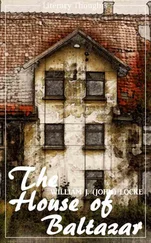John William Polidori - The Diary of Dr. John William Polidori
Здесь есть возможность читать онлайн «John William Polidori - The Diary of Dr. John William Polidori» — ознакомительный отрывок электронной книги совершенно бесплатно, а после прочтения отрывка купить полную версию. В некоторых случаях можно слушать аудио, скачать через торрент в формате fb2 и присутствует краткое содержание. Жанр: Биографии и Мемуары, foreign_antique, foreign_prose, на английском языке. Описание произведения, (предисловие) а так же отзывы посетителей доступны на портале библиотеки ЛибКат.
- Название:The Diary of Dr. John William Polidori
- Автор:
- Жанр:
- Год:неизвестен
- ISBN:нет данных
- Рейтинг книги:5 / 5. Голосов: 1
-
Избранное:Добавить в избранное
- Отзывы:
-
Ваша оценка:
- 100
- 1
- 2
- 3
- 4
- 5
The Diary of Dr. John William Polidori: краткое содержание, описание и аннотация
Предлагаем к чтению аннотацию, описание, краткое содержание или предисловие (зависит от того, что написал сам автор книги «The Diary of Dr. John William Polidori»). Если вы не нашли необходимую информацию о книге — напишите в комментариях, мы постараемся отыскать её.
The Diary of Dr. John William Polidori — читать онлайн ознакомительный отрывок
Ниже представлен текст книги, разбитый по страницам. Система сохранения места последней прочитанной страницы, позволяет с удобством читать онлайн бесплатно книгу «The Diary of Dr. John William Polidori», без необходимости каждый раз заново искать на чём Вы остановились. Поставьте закладку, и сможете в любой момент перейти на страницу, на которой закончили чтение.
Интервал:
Закладка:
An oldish man wears a three-cornered cocked hat, capacious breeches, black or blue stockings, buckles, and a great-coat; young, fancy travelling-caps. The women wear enormous gold earrings, large wooden shoes. Their dress is a kind of bed-gown, like the Scotch. Young girls of eight in town have their hair dressed with a net or cap. In towns and villages the better peasant-women wear a black silk mantle with a hood, that looks well. Multitudes of children everywhere, who tumble and run by the side of the carriage to gain a few centimes. In the larger villages the market-places are splendidly large, with a little square place in the middle, with pollards and a statue. The houses seem comfortable everywhere. Going into the house of a postmaster, we saw some English prints. At another, our servants having got down and comfortably seated themselves to a bottle of wine etc., the postmistress, on our getting out, took us for the servants, and told us "the messieurs Anglais were in yon room"—and then made us a thousand apologies. At every posthorse place there is kept a book of the posts: many barriers—every 1-1/2 mile.
At Gand they had told us we could not reach Anvers without passing the Scheldt at 2 o'clock—we passed it at 6-1/2.
The town of Antwerp makes a good figure at a distance, chiefly on account of its Cathedral, which has a very airy appearance, the steeple showing the sky between its meeting arches. About five steeples. The fortifications, which enabled Carnot to make such a defence, produce no great effect on the sight.
[The defence by Carnot was, when Polidori wrote, a quite recent event, 1814.]
The Scheldt is a fine river, not so large as our Thames, and covered with ugly Dutch vessels. We passed our coach in a boat.
[This coach was a formidable affair. According to Mr. Pryse Lockhart Gordon, it was "copied from the celebrated one of Napoleon taken at Genappe, with additions. Besides a lit de repos , it contained a library, a plate-chest, and every apparatus for dining."]
On landing, twenty porters ran off with our things to a cart. As they were passing, one in all the pomp of office stopped us, and asked for our passports, which (on handing to him) he detained, giving his directions to the police.
The older parts of Antwerp have a novel and strange effect by the gable-ends being all to the street, ornamented—very acute angles. The Place de Meer is fine. The old street, the finest I ever saw, has some fine houses. Many of the houses have English labels on them. In our sitting-room are two beds. Indeed, the towns are beautiful: their long streets, their houses all clean-stuccoed or white-washed, with strange old-fashioned fronts, the frequent canals, the large places and venerable cathedrals. Their places are much finer than our squares, for they contain trees, and are open without railing.
Went to the café, and saw all playing at dominoes. Read The Times till the 23rd. Fine furniture, everywhere of cherry-tree.
At Gand in the Cathedral the cicerone laid great stress on the choir-seats being all made of solid acajou. The master of the inn at Ghent assures me the carriage of Buonaparte was made in Paris—the body-carriage at Brussels: no English work. Plenty of Americans in the town.
April 30. —Got up late, and went to look at the carriage, and found that the back had been not of the best-made. Called a maréchal, who assured me it could not be better. Breakfasted. Then looked at an old calèche, for which asked 60 naps. Refused it.
Got, with a guide, a calèche to see the lions. The town is large: apparently, not a proportionable quantity of misery. Women better-looking. At all the fountains, Madonnas—and upon all the corners of the streets, with lamps before them. Lamps with reverberators strung on ropes into the middle of the streets. Went to the Cathedral. Everywhere we have been, dreadful complaints of French vandalism. In this chapel it has been shameless: once crowded with altars of marble, now there are about five—only two marble, the others painted in imitation. Pictures were stolen—altars sold by auction—only one saved, bought by a barber for a louis. The others, with all the tombs, monuments, everything, broken by these encouragers of the fine arts. So great was the ruin that there were five feet of fragments over the church—even the columns that support the roof were so much defaced that they were obliged, in restoring it, to pare them all much thinner. Some pictures were carried to Paris, of which some are now about to be replaced. It was the feast of St. Anthony, and many candles were burning about, and some relics were fixed above the doors. In many parts of the chapel were frames containing silver representations, very small, of bad limbs etc., offered by the devout. Many images over altars, dressed out in silk and taffeta: most common one, the Virgin Mary. Though the French acted with all the spirit of Vandals and true Gauls, yet to their very mischief is owing the greatest beauty of the Cathedral, the choir not being divided from the church, so that from one end to the other there is a complete perspective and one of the finest effects I have seen, the airiness and length being now proportionate. There is one great defect in the internal decorations—that they are Greek. What bad taste it is to ornament Gothic with Corinthian columns must be evident: to make it also more glaring, the marble is all coloured. There is here a fine marble altar-railing. Indeed, in all the churches we have here seen they are beautiful—especially where boys, called in Italian "puttini," are sculptured. The confessionals are of wood, with evangelical figures, nearly as large as life, between each box—not badly carved.
We went to see another church, wherein is the tomb of Rubens.
[This is the Church of St. Jâques.]
It is in a chapel by itself, where annually a mass is said for his soul. It is worthy of him: ornamented by a painting, by himself, of St. George, and a statue he brought with him from Rome of the Holy Virgin. The church in which he is buried was saved from pillage by the priests belonging to it revolutionizing. It is crowded with altars and pictures—some Rubens, some Polenck, and others. There is a painting by Metsys, who originally was a maréchal, and who with his mere hammer formed the decorations to a pump, which are not bad. The Latin inscription on his monumental stone refers to a story related of him: that, upon courting the daughter of Francis Floris, the artist with indignation talked about the dirty rascal's impudence, he being merely a blacksmith; on which Metsys set off for Rome, and upon his return asked the daughter to introduce him to her father's room of painting: where, finding a picture not finished, he painted a bee—that excited the indignation of Floris's pocket-handkerchief, and gained him his daughter. I have seen the picture, and it might be true. The pump is not bad, being merely beaten into shape. On the top is a giant who used to cut off merchants' gains by means of tolls, and their hands by means of axes. He used to throw an iron band into the scales of his tradesmen; and from thence, 'tis said, Antwerp got its name.
[This may be "said": but a less legendary derivation of the Flemish name Antwerpen is "aent werf," or "on the wharf."]
The sides of this church all along are lined with confessionals.
In the Church des Augustins we saw Rubens's Assembly of the Saints , from Paris; where he has shown how weak he could be in composition, and in vanity—for it is the third picture in which he has put himself in St. George's armour. The composition is confused, without an object to fix the attention. A Vandyck near him is much superior.
[Polidori's observations about Flemish paintings are generally indicative of liking, more or less: but Byron went dead against them. In a letter of his to his half-sister, Mrs. Leigh, written from Brussels on May 1, 1816, we find: "As for churches and pictures, I have stared at them till my brains are like a guide-book: the last (though it is heresy to say so) don't please me at all. I think Rubens a very great dauber, and prefer Vandyck a hundred times over—but then I know nothing about the matter. Rubens's women have all red gowns and red shoulders; to say nothing of necks, of which they are more liberal than charming. It may all be very fine, and I suppose it may be art, for 'tis not nature." Again, in a letter to John Murray from Milan, October 15, 1816: "The Flemish school, such as I saw it in Flanders, I utterly detested, despised, and abhorred."]
Читать дальшеИнтервал:
Закладка:
Похожие книги на «The Diary of Dr. John William Polidori»
Представляем Вашему вниманию похожие книги на «The Diary of Dr. John William Polidori» списком для выбора. Мы отобрали схожую по названию и смыслу литературу в надежде предоставить читателям больше вариантов отыскать новые, интересные, ещё непрочитанные произведения.
Обсуждение, отзывы о книге «The Diary of Dr. John William Polidori» и просто собственные мнения читателей. Оставьте ваши комментарии, напишите, что Вы думаете о произведении, его смысле или главных героях. Укажите что конкретно понравилось, а что нет, и почему Вы так считаете.












